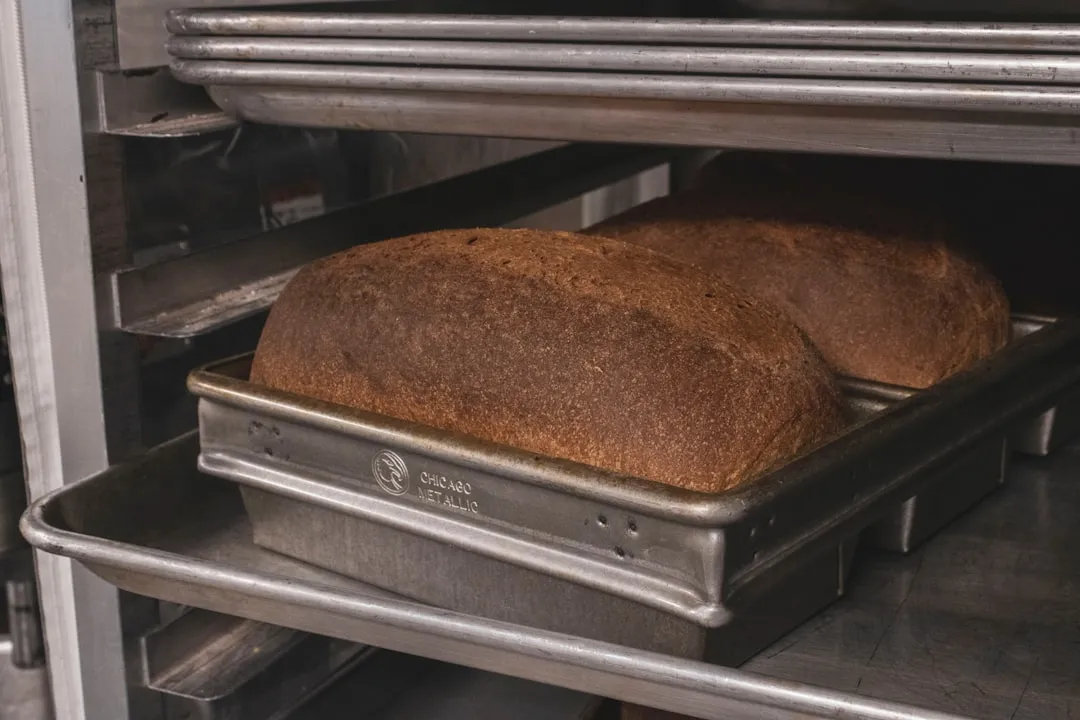We're year-round pesto eaters. We eat pesto outdoors in the summertime on a light pasta with a glass of rosé. We eat pesto in the wintertime by the fire atop a bowl of soup with a warm mug of tea. We eat pesto with scrambled eggs for breakfast, pesto-slathered sandwiches for lunch, and baked pesto chicken for dinner.
More often than not we opt for sunflower seeds instead of pine nuts in our pesto, as they are less expensive but have a similar mild and nutty taste. We also sometimes place parsley alongside our base of fresh basil leaves, and always add lots of garlic and freshly grated Parmigiano-Reggiano.
Now we've discovered a new addition to our pesto, thanks to the folks over at Food52. While you can use many greens in pesto, they suggest throwing your strawberry stems straight into that green-hued beauty of a sauce to add some extra flavor. And we agree.
Assemble the Ingredients
- 1½ c. packed fresh basil leaves
- ½ c. strawberry stems (we use a bit of the red tops + the green stems)
- 3 cloves garlic, peeled
- ¼ c. shelled sunflower seeds
- 2/3 c. extra-virgin olive oil, divided
- sea salt and black pepper
- ½ c. freshly grated Parmigiano-Reggiano

Nick & Bay Nigro/Food Hacks Daily
Create the Pesto
Toss all your ingredients, except for the olive oil, into a food processor and pulse until coarsely chopped. Add in half of the olive oil and process until smooth, then add the remaining olive oil.

Nick & Bay Nigro/Food Hacks Daily

Nick & Bay Nigro/Food Hacks Daily

Nick & Bay Nigro/Food Hacks Daily

Nick & Bay Nigro/Food Hacks Daily
Presto, Pesto!
Give your seasonings a final check, then transfer the pesto to a bowl. If you're not going to be using your pesto right away, store it in an airtight container in the fridge for up to a week. A thin layer of olive oil on the top will keep it moist and ready to use.

Nick & Bay Nigro/Food Hacks Daily
You can also store your pesto in the freezer. Monica at The Yummy Life gives an excellent step-by-step how-to for freezing pesto both in ice cube trays (good for up to six months) or in small jars (good for 9 to 12 months).

Nick & Bay Nigro/Food Hacks Daily
The Taste & Texture
The taste is similar to that of any other pesto, but with a slight sweetness due to the bit of red strawberry that makes its way into the sauce. Many opt for leaving the ripe red ring of strawberry out of their pesto; we did not, because we loved the added sweetness.
We also went heavy on the basil, while some add parsley to the mix to complement the texture and bitterness of the strawberry tops. The overall taste is sublime and different from your standard, run-of-the-food-mill pesto. It's almost hard to pinpoint exactly what the secret ingredient is unless you're in the know. But that special flavor is there!
As far as the texture of the berry-top pesto goes, some chefs use a mortar and pestle before processing to get the texture of the leaves as fine as possible. If you don't have one, no need to worry. We found that just using the food processor works just fine. The texture is smooth, but with a slight (but not unpleasant) graininess, as you would expect from any pesto.
7 Ways to Eat Your Pesto
Now that you have your strawberry stem pesto ready to roll, what to do with it? The possibilities are almost limitless, but one good thing is that if you've frozen your summer-made pesto (see above), you can bring a little bit of sunny flavor to even the coldest winter night.
- baked pesto chicken
- tortellini with pesto and sun-dried tomatoes
- basil pesto crostini
- roasted vegetable and pesto sandwich
- poached egg over polenta with pesto
- pesto pizza
- pesto bean soup
We were pleasantly surprised by how much we loved our newfound pesto recipe and will be making it again soon. The taste and the texture are subtly different from regular pesto, plus we love the idea of using every part of a food item that we can, rather than just tossing it.
Have you tried making your own unique variation of pesto? Let us know in the comments below.
- Follow Food Hacks Daily on Facebook, Twitter, and Instagram
- Follow WonderHowTo on Facebook, Twitter, and Google+


























Comments
Be the first, drop a comment!